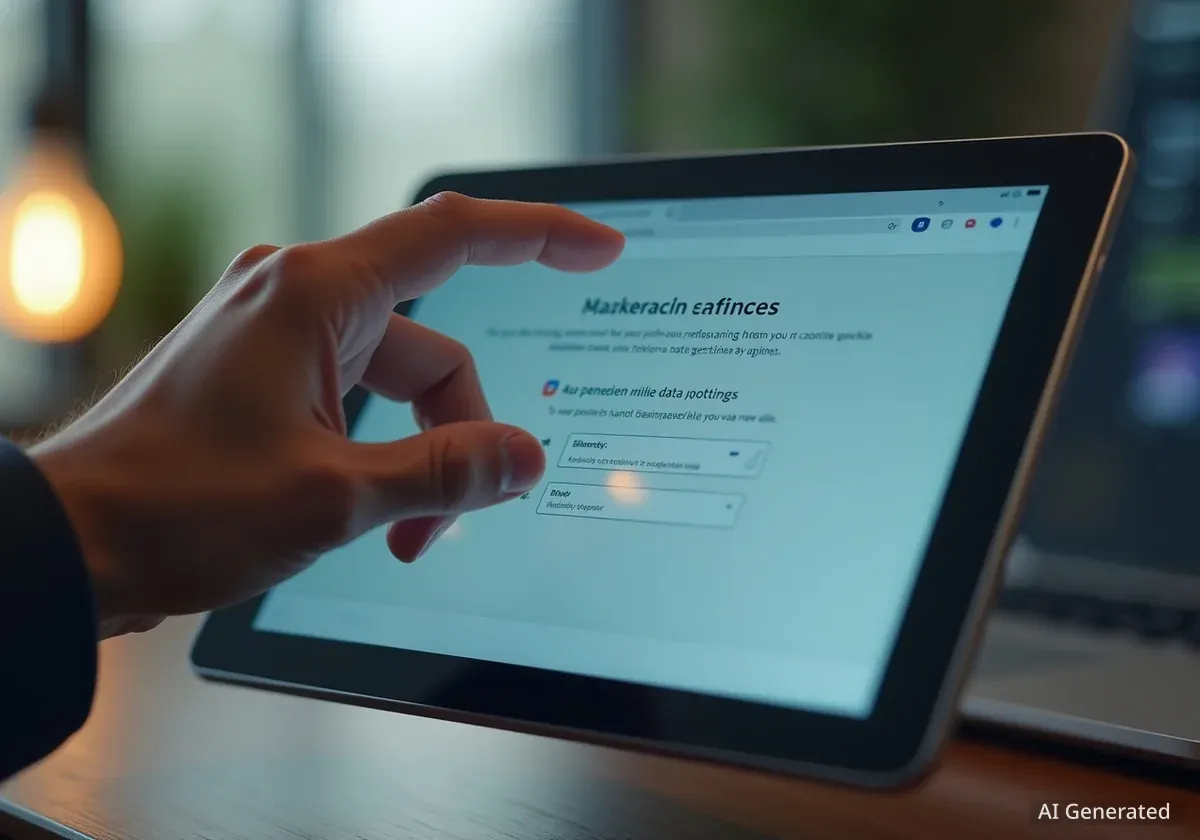Online platforms are increasingly focused on user data privacy and the mechanisms for obtaining consent. Companies like Yahoo, along with their associated brands such as AOL, Engadget, In The Know, and Makers, are implementing clear procedures to inform users about data collection and usage. This initiative aligns with global privacy regulations and aims to provide users with more control over their personal information.
Key Takeaways
- Users can manage cookie and personal data preferences.
- Options include 'Reject all' or 'Manage privacy settings'.
- Consent can be withdrawn or changed at any time.
- Privacy and cookie policies provide detailed information.
Understanding Data Collection on Digital Platforms
Digital platforms gather various types of data to enhance user experience and deliver targeted content. This data can include browsing history, location information, and interaction patterns. The collection of this data is a standard practice across the internet, but how it is managed and disclosed is subject to increasing scrutiny.
According to industry reports, a significant percentage of internet users are now more aware of their digital footprint. A 2023 study by the Pew Research Center indicated that 75% of internet users are concerned about how companies use their personal data. This growing awareness drives platforms to adopt more transparent privacy practices.
Key Facts on Data Privacy
- Data Types: Browsing history, IP addresses, device information, location data.
- Purpose: Personalizing content, targeted advertising, improving service functionality.
- Regulatory Frameworks: GDPR, CCPA, and other global privacy laws mandate user consent and data protection.
User Control Over Personal Data
Users of platforms like Yahoo and its network of brands now have explicit options to control how their cookies and personal data are used. These options are typically presented through clear prompts and accessible settings within the platforms.
One primary option is to 'Reject all' non-essential cookies and the use of personal data for additional purposes. This provides a straightforward way for users to limit data sharing. Alternatively, users can choose to 'Manage privacy settings' to customize their preferences, allowing for a more granular control over specific data uses.
"Empowering users with clear choices about their data is crucial for building trust in the digital ecosystem," stated a spokesperson for a major tech firm in a recent interview. "Transparency is not just a regulatory requirement; it is a fundamental aspect of user relations."
The Role of Cookies in Online Experience
Cookies are small text files stored on a user's device by a website. They serve several functions, including remembering user preferences, tracking browsing activity, and enabling personalized advertising. While some cookies are essential for a website to function, many are used for analytical or marketing purposes.
The ability to manage cookie settings allows users to decide which types of information are collected. For example, a user might allow functional cookies to ensure a smooth browsing experience but reject marketing cookies to avoid targeted advertisements.
Background on Privacy Regulations
The General Data Protection Regulation (GDPR) in Europe and the California Consumer Privacy Act (CCPA) in the United States are two significant pieces of legislation that have shaped current data privacy practices. These regulations mandate that companies obtain explicit consent for data processing and provide users with rights regarding their personal information, including the right to access, rectify, and erase their data.
These laws have influenced a global shift towards more transparent data handling practices, impacting how companies worldwide interact with user data.
Changing Consent and Accessing Privacy Policies
Users are not locked into their initial privacy choices. Platforms ensure that consent can be withdrawn or changed at any time. This flexibility is a key aspect of modern data privacy frameworks.
Links such as 'Privacy & cookie settings' or 'Privacy dashboard' are typically available on sites and apps. These links lead to dedicated sections where users can review and modify their preferences. This ongoing control is a direct response to user demand for greater autonomy over their digital lives.
Detailed Information in Privacy Policies
Each platform provides comprehensive privacy policies and cookie policies. These documents detail how personal data is collected, processed, stored, and shared. They also explain the user's rights under applicable data protection laws.
Reading these policies helps users understand the full scope of data practices. For example, a privacy policy might explain that data is used for internal analytics, shared with third-party advertisers, or used to improve machine learning algorithms. The clarity of these policies is a critical component of transparency.
The Importance of Transparency in Digital Services
Transparency in data practices builds trust between users and digital platforms. When users understand how their data is used, they can make informed decisions. This approach moves beyond simple compliance with regulations and fosters a more respectful relationship with the user base.
Companies that prioritize clear communication about data privacy often see higher user engagement and loyalty. A 2022 survey by Accenture found that 81% of consumers would be more loyal to brands that are transparent about their data usage.
- Enhanced Trust: Clear policies foster user confidence.
- Informed Decisions: Users can make choices based on full information.
- Regulatory Compliance: Adhering to laws like GDPR and CCPA.
- Improved User Experience: Tailored content delivered with user consent.
The ongoing evolution of data privacy practices underscores a significant shift in the digital landscape. Users are no longer passive participants in data collection; they are active stakeholders with rights and choices. Platforms continue to adapt, providing tools and information to meet these evolving expectations.





